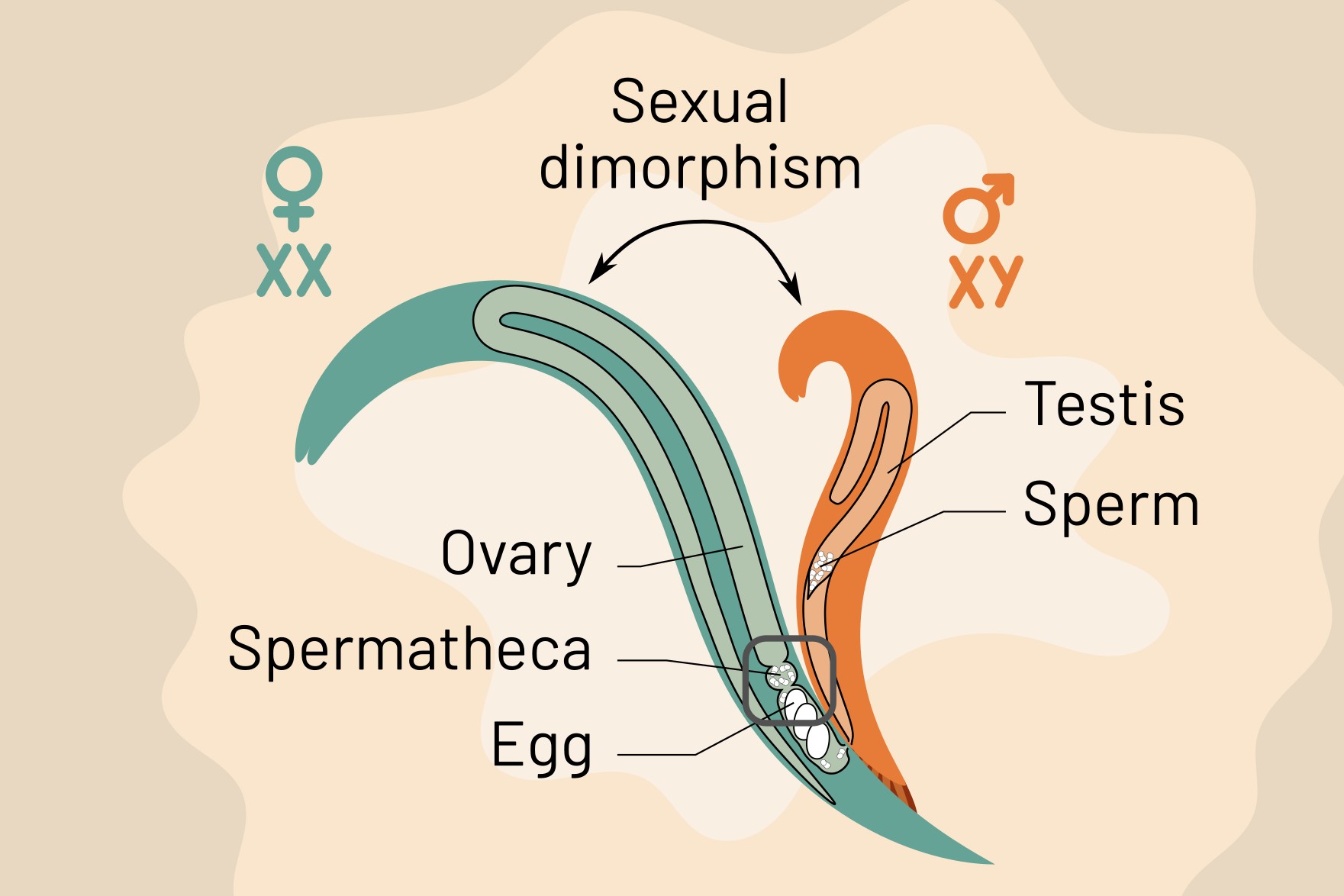
The quirks of a reproductive system between sexuality and asexuality
While doing my Masters at Rennes, I was lucky to have the opportunity to do a project with Sylvain Glémin, who was working with a team from Lyon. They were studying a relatively unknown species, Mesorhabditis belari. This nematode rare has an unusual reproductive system, which is partially sexual and partially automictic. In a fairly classic way in this type of species, the sex determination system is of the XY type, and the reproduction always entails a spermatozoon fertilising an egg. Fertilisation is as follows. Every time, there is an arrest of the egg cells in prophase I and a 50% X and 50% Y spermatozoa. But surprisingly, two zygotic production pathways are distinguishable afterward. The first is just a typical sexual method, producing only males. The female meiosis is completed and two polar globules are produced when the male pronucleus and sperm centrosome enter. After then, the initial mitotic spindle is formed by the genetic materials of the male and female. The second route corresponds to gynogenetic automixis. Gynogenesis, also referred to as pseudogamy, is the process by which a zygote is formed by the transmission of female genetic material alone (making it an asexual type of offspring production), but with the need for the egg cell to be fertilised to trigger embryogenesis. It is yet unknown what exact mechanism makes a gynogenetic zygote possible to form. It is known, nevertheless, that meiosis aborts its first division. It is therefore a case of modified meiosis. This abortion offers an important hint about the mechanism, which is most likely the central fusion. In unmodified meiosis, central fusion would correspond to the fusion of the first meotic division’s products. But in fact, there is a second two way can central fusion show up: the first division is aborted and the second division restores ploidy by separating the sister chromatids.
My job, under Sylvain’s supervision, was to try and explain a surprising fact about the species: population genetics statistics measured on individuals reared in the laboratory show an absence of linkage disequilibrium and a Fis close to 0, two characteristics of a well-mixed population. However, the species is not well-mixed, since a large proportion of individuals are produced asexually.
The approach we adopted to solve this problem, as well as more details on the biology of the species and the results we obtained, can be found at: https://www.science.org/doi/full/10.1126/sciadv.adi2804
Communication Design is a mixed discipline between design and information-development which is concerned with how media intermission such as printed, crafted, electronic media or presentations communicate with people. A communication design approach is not only concerned with developing the message aside from the aesthetics in media, but also with creating new media channels to ensure the message reaches the target audience. Some designers use graphic design and communication design interchangeably due to overlapping skills.
Communication design can also refer to a systems-based approach, in which the totality of media and messages within a culture or organization are designed as a single integrated process rather than a series of discrete efforts. This is done through communication channels that aim to inform and attract the attention of the people you are focusing your skills on. Design skills must be tailored to fit to different cultures of people, while maintaining pleasurable visual design. These are all important pieces of information to add to a media communications kit to get the best results.

“Our study uncovers an unexpected type of non-Mendelian genetic inheritance involving cosegregation of recombinant chromatids.” Blanc et al., 2023
Communication design seeks to attract, inspire, create desires and motivate the people to respond to messages, with a view to making a favorable impact to the bottom line of the commissioning body, which can be either to build a brand, move sales, or for humanitarian purposes. Its process involves strategic business thinking, using market research, creativity, and problem-solving. Communications designers translate ideas and information through a variety of media. Their particular talent lies not only in the traditional skills of the hand, but also in their ability to think strategically in design and marketing terms, in order to establish credibility through the communication.
The term communication design is often used interchangeably with visual communication, but has an alternative broader meaning that includes auditory, vocal, touch and smell. Examples of communication design include information architecture, editing, typography, illustration, web design, animation, advertising, ambient media, visual identity design, performing arts, copywriting and professional writing skills applied in the creative industries.
The identification of self-esteem as a distinct psychological construct is thought to have its origins in the work of William James (1892). James identified multiple dimensions of the self, with two levels of hierarchy: processes of knowing (called the ‘I-self’) and the resulting knowledge about the today.

Comments